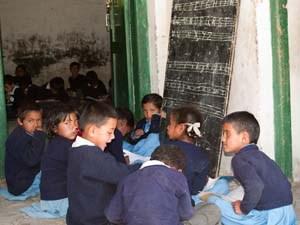
A report by NGO Dasra studies how private-public partnerships can play a large role in improving the quality of public education in Mumbai, India. The Municipal Corporation of Greater Mumbai recently launched a School Improvement Program to increase the level of learning across all of its schools. In Mumbai, public-private partnerships may be one of the best solutions to addressing the city’s public education needs.
Mumbai claims a 97% enrollment rate of all primary school-aged children in private and public schools. Despite such a high rate, 40% of children attend private schools because of perceptions that private education is superior to public education.
Poor families cannot afford to put their children through the private education system. The public education system then caters to the most marginalized children, where the incentive to attend school is based on the availability of lunch. However, these children have low reading levels where approximately 45-50% cannot read or write a paragraph.
A November 2010 report by Dasra called Making the Grade: Improving Mumbai’s Public Schools focuses on how public-private partnerships between not-for-profit organizations and the Municipal Corporation of Greater Mumbai (MCGM) can improve the quality of public school education.
There are 1,612 public elementary schools in Mumbai. The MCGM is responsible for the funding, management, infrastructure, staffing, implementation and delivery of education to Mumbai’s public schools, where the expenditures are US$50 (INR 2,250) per child per year. Recently, the MCGM launched the School Improvement Program, a public-private partnership working on specific interventions with the goal of increasing learning levels in the entire public education system.
Mumbai’s challenges is not merely a matter of increasing literacy, but of having a grassroots understanding of what the obstacles are to improving public education. Many first generation students in Mumbai who attend public schools live in poor, congested conditions that are not conducive to encouraging a high-learning system. Rural-to-urban migration causes a mixture of many languages – this is a true challenge when bringing all these students into a single classroom and trying to set educational standards at the elementary level.
http://beyondprofit.com/partners-in-public-education/
